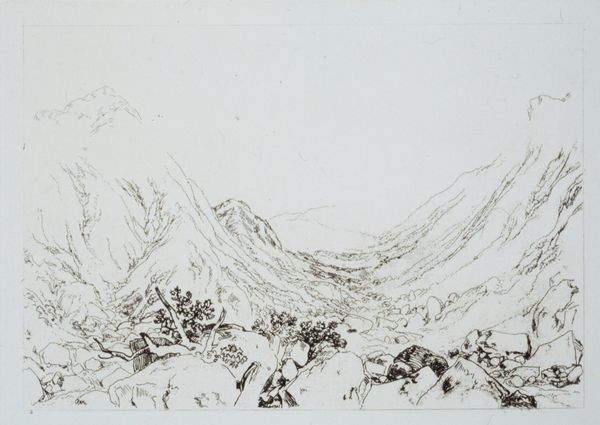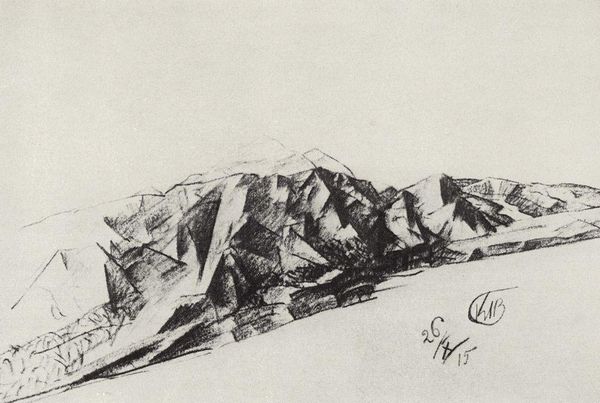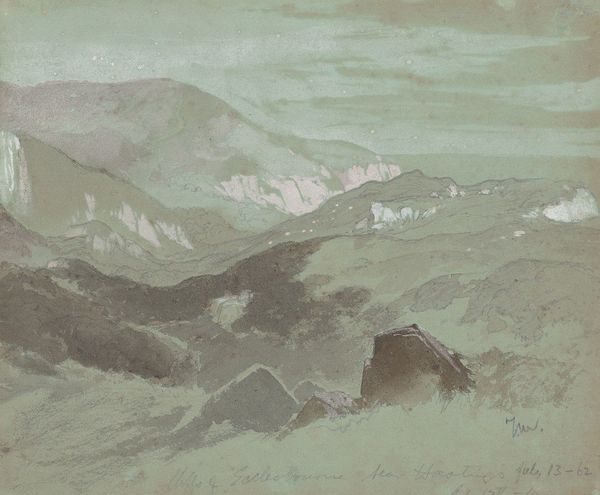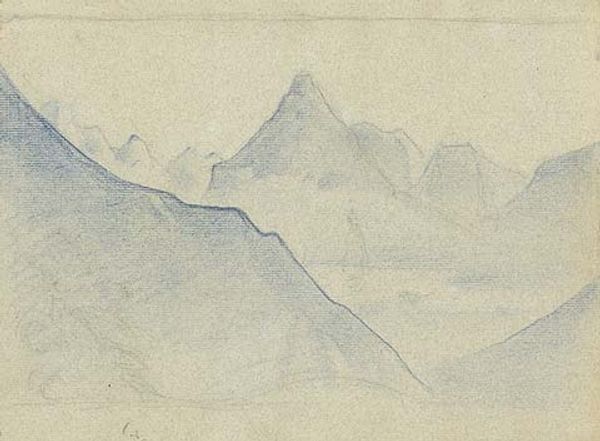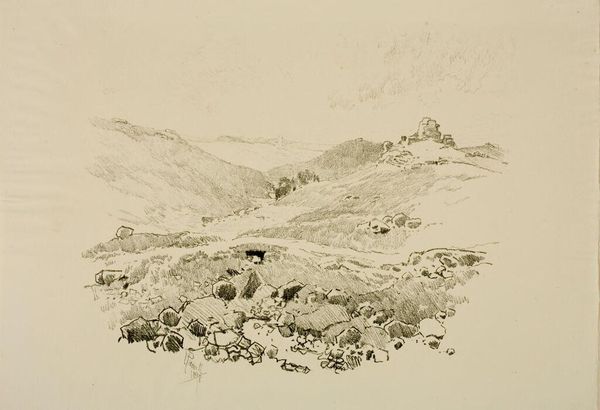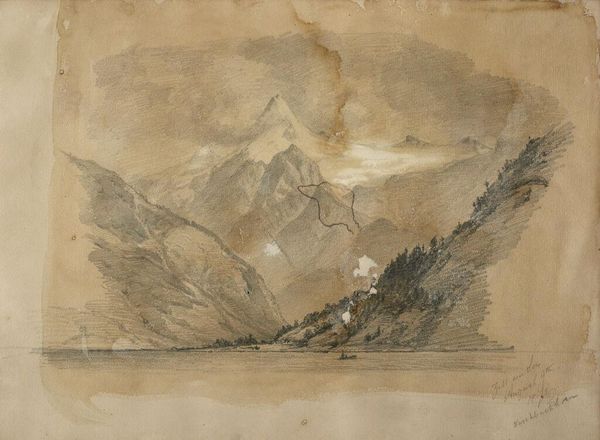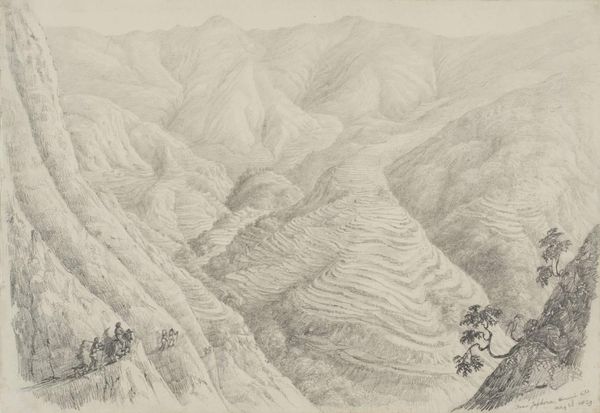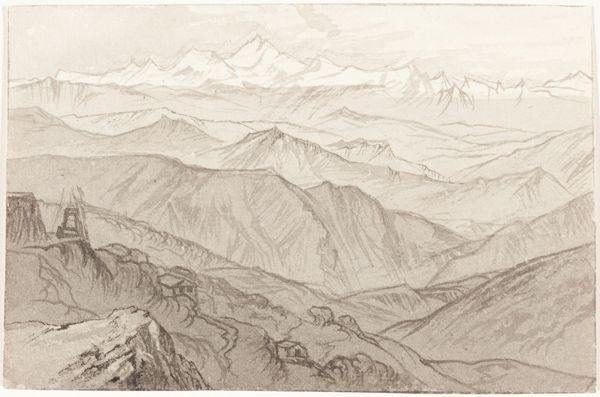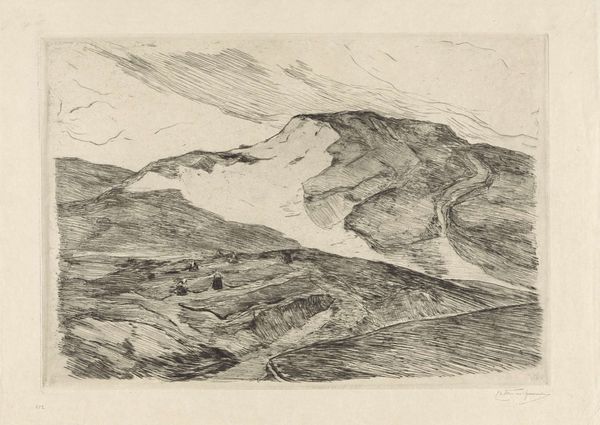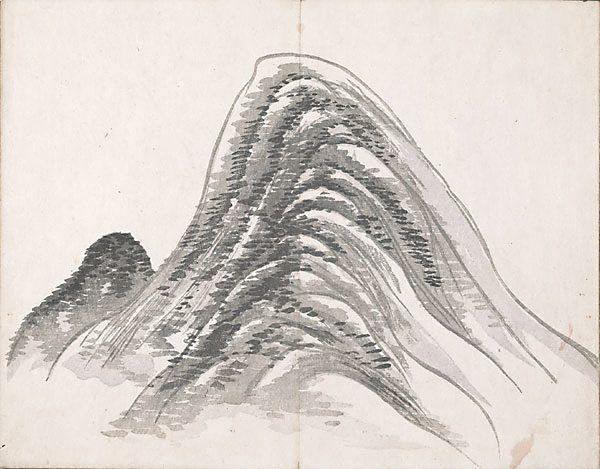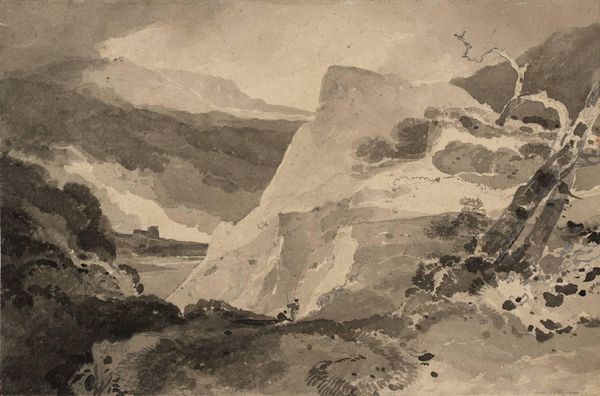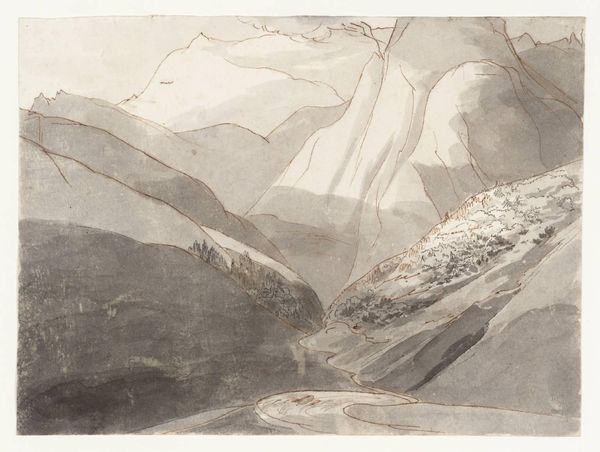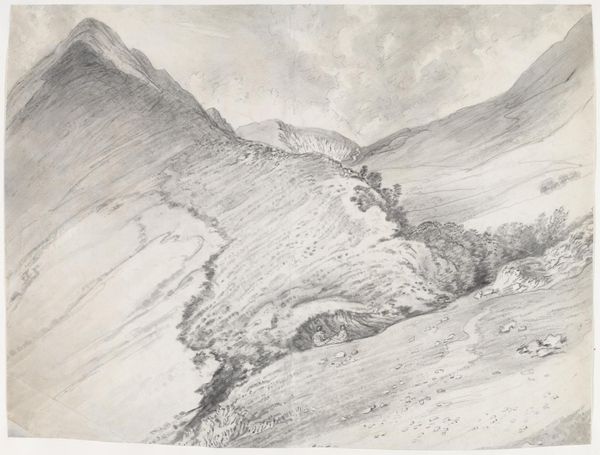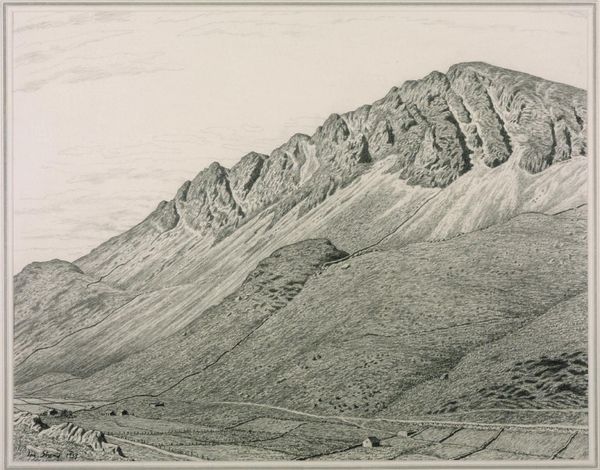
drawing, paper, ink
#
drawing
#
narrative-art
#
asian-art
#
landscape
#
charcoal drawing
#
figuration
#
paper
#
oil painting
#
ink
#
mountain
#
men
Copyright: Public domain China
Curator: Before us is Fu Baoshi's 1951 work, "The Far Snows of Minshan Only Make Us Happy," an ink and wash painting on paper. Editor: Its atmospheric quality immediately strikes me. The somber monochrome palette against that stark, towering mountain range creates a palpable sense of awe and perhaps even trepidation. Curator: Observe how Baoshi employs a masterful control of ink wash. Notice the textures. The darkest, densest strokes delineate the sharp, precipitous cliffs, which give way to washes of pale grey, conveying the snow-laden surfaces. The stark, jagged peaks stand out sharply against the gentle misty, soft mountain behind it. The ink creates depth, highlighting the immensity of the landscape. Editor: Right, and these figures trudging along at the foot of the mountain underscore both the physical challenge and also perhaps allude to a broader sociopolitical context. Given its creation during the early years of the People’s Republic of China, the painting is probably less about purely aesthetic beauty, but an allegory of resilience, collectivism, and the overcoming of monumental obstacles. It definitely speaks to themes of socialist realism, and national identity being forged through collective labor. Curator: Perhaps. I do, however, see more of an aesthetic and art-historical continuation. Note the connections to traditional Shanshui painting, where landscape is not merely background, but rather the primary subject, conveying the spiritual essence of the natural world. The mountains as the symbolic link between earth and the cosmos. Baoshi, while working in a socialist realist environment, remained deeply entrenched in this visual language and artistic heritage. Editor: Still, consider the title's direct emotional assertion "Only Make Us Happy"—quite loaded and suggests propaganda! To ignore the revolutionary zeitgeist seems to discount the artist's lived reality and intentions, no? These figures represent the socialist ideal, pushing through adversity, not spiritual transcendence, but physical exertion. Curator: That's an insightful, historically aware, reading of the composition. But equally one can view Baoshi´s mastery in capturing a universal aesthetic quality while alluding to very particular historic and political circumstances, isn´t it? It's more complex than a simplistic illustration of revolutionary ethos; Baoshi creates something evocative through the intrinsic qualities of brush and ink. Editor: Agreed. This definitely creates interesting avenues for analysis regarding the artwork’s cultural, historical, and social impacts. Curator: Indeed, appreciating its interplay between form and implied narrative, a truly satisfying conclusion.
Comments
No comments
Be the first to comment and join the conversation on the ultimate creative platform.
